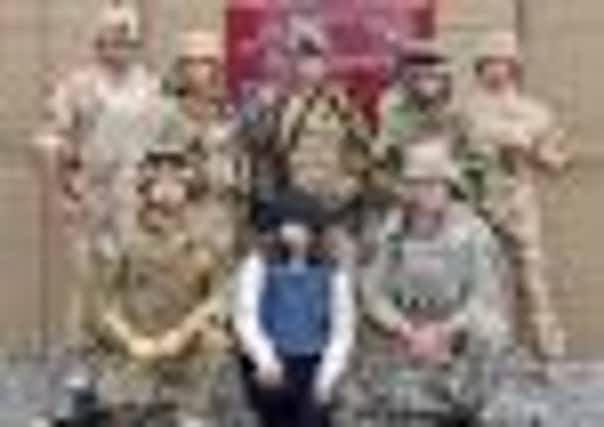A team effort for soldiers in Afghanistan


One of the most interesting aspects of working in Task Force Helmand is the sheer variety of people.
We are operating in what is technically known in military circles as a ‘combined, joint’ environment – usual overly complicated military jargon, obviously designed to confuse some unknown and unseen enemy out there. It means there is more than one nation and more than one service represented.
Advertisement
Hide AdAdvertisement
Hide AdWithin Task Force Helmand we have Brits, Americans, American Marines, who are clearly very special and deserve their own mention! Danes, Estonians, Australians, Canadians, Tongans – although technically they are at Camp Bastion and not in Task Force Helmand – and Bosnians, not to mention the Foreign and Commonwealth nations within the British Military.
Who would have thought that 12 years on from my time in Bosnia I would see the Bosnian Army, working from a Danish base within a UK Task Force under an American headquarters in Afghanistan?
We also have a mix of Army, Navy, Air Force, British and US Marines, and of course a variety of civilians.
Within the provincial reconstruction team, with whom we share main operating base Lashkar Gah, there are police, lawyers, civil servants from the Ministry of Defence, Foreign and Commonwealth Office, Stabilisation Unit, Department for International Development and all sorts of weird and wonderful specialists that are required to fight an insurgency and help a country to get back on its feet... and then of course, there are all the Afghans that we employ here too.
Advertisement
Hide AdAdvertisement
Hide AdAll in all, this makes for an exceptionally interesting melting pot within which to work. We tend to be very similar in our outlook in the military, and working so closely with people from so many different backgrounds, cultures and nations can lead to some fascinating discussions.
Remarkably, despite our differences, our disparate and somewhat patchwork organisation manages to work well together and seems to produce a herculean team effort on a daily basis. Everyone here is very clear about why we are here, and what we are here to do, and that does seem to provide the focus which enables us to get along, especially when we see the results of our actions.
Obviously that doesn’t stop the banter – it would be nigh-on impossible for the Army to work alongside the RAF without some reference to Brylcreem Boys, baby-gro flying suits and five star hotels. I couldn’t imagine a Royal Marine surviving without challenging his Paratrooper colleague to some form of ‘heaves and dips’ or ‘who looks best in the mirror’ competition; in fact it won’t be long before all of the Paratrooper wings that currently adorn Lashkar Gah are painted over with Commando daggers once 3 Commando Brigade take over from 16 Air Assault Brigade in a few months’ time.
We have even had a mini-ashes competition within the Task Force at Artillery Hill – which houses a troop of Australian gunners, who made the mistake of trying to take on the might of the Royal Artillery at cricket. Obviously, the England team won in a near mirror of the real Ashes competition.
Working in Lashkar Gah has its good days and its bad days – but I would be hard pushed to remember a boring day with the variety of people that I have been working with in the last five months!